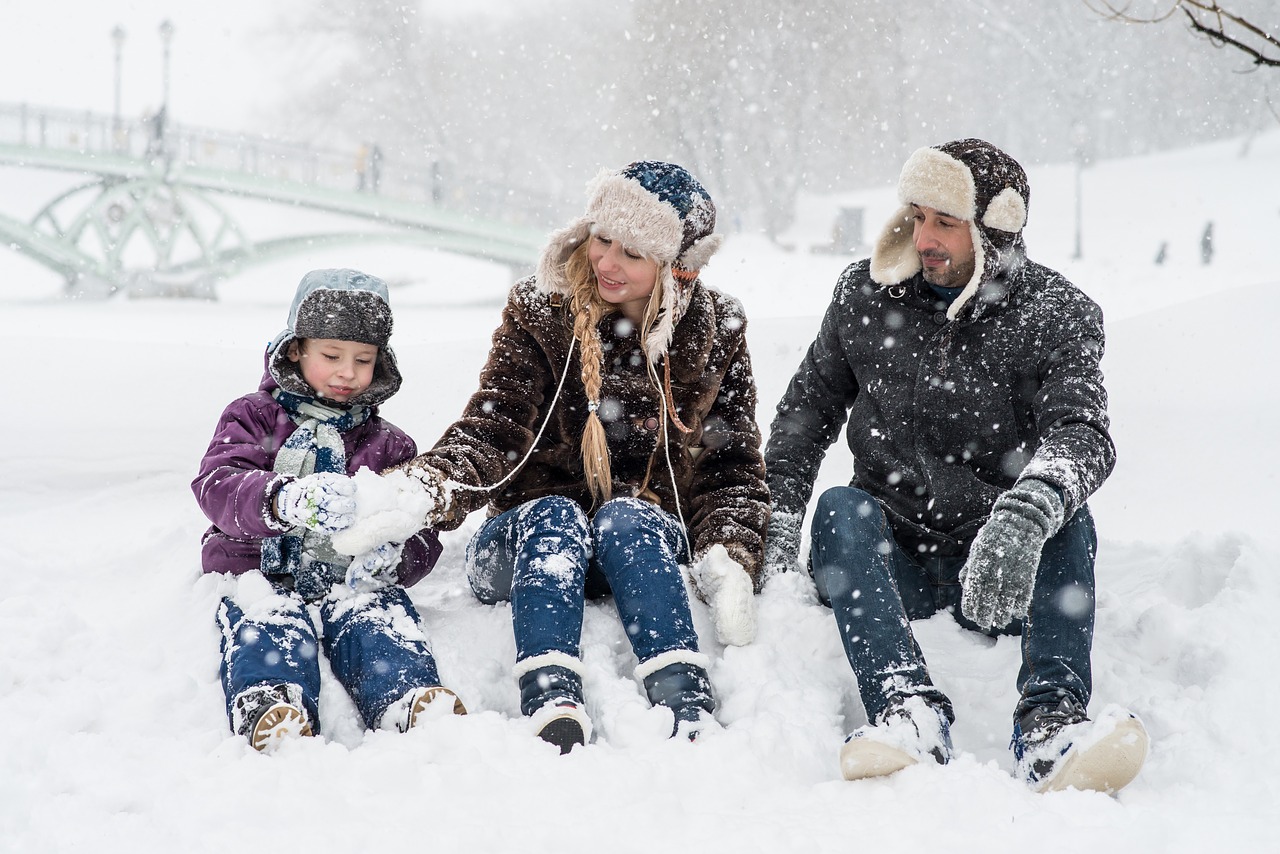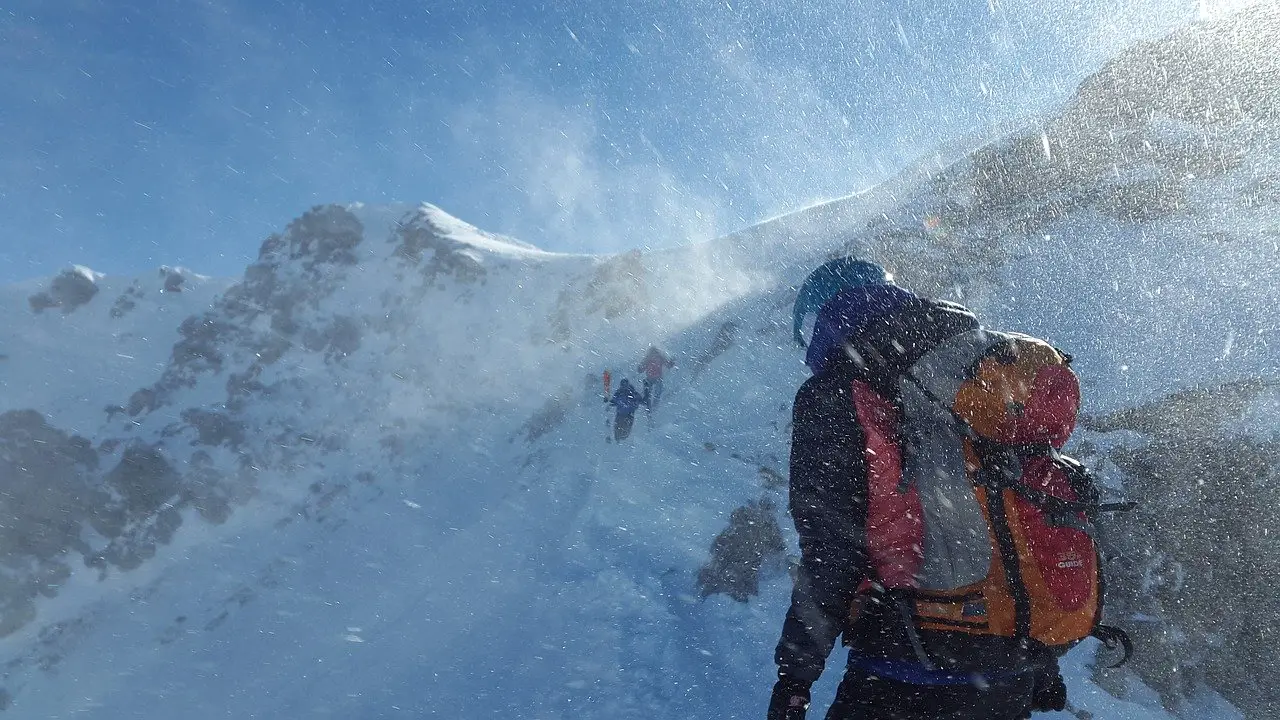Cold weather is probably one of the toughest outdoors challenges. Whether you’re just camping for a limited period of time or trying to survive out there for months, extreme cold weather is often what stands between you and uninterrupted functionality.
Cold weather is much more than a nuisance. You need to be prepared and thoroughly learn how to survive extreme cold weather. I did my best to diligently research this subject, collecting every frequently asked question and providing it with a comprehensive answer. I hope you can learn a few important and life-saving things from this post.
How to Stay Warm and Survive Extreme Cold?
- Wear weather appropriate, layered clothing.
- Stay mobile and exercise, to keep the blood flow.
- Drink hot beverages and eat warm food.
- Protect yourself with a shelter.
- Make sure that your shelter is warm and properly insulated.
If your shelter is a tent, here is a good resource that explains how to heat a tent. You can also keep yourself warm by making a campfire. It can be tricky in a winter weather, so here is an article that guides how to start fire even if you don’t have matches.
What Is the Lowest Temperature That a Human Can Survive?
An average human being should maintain the core temperature of at least 36.6°C / 97.9°F. Once it starts dropping and reaches about 35°C / 95°F, you are getting dangerously close to hypothermia (see below). This harms your significant inner organs, including the heart and brain.
When body’s core temperature reaches 33°C / 91°F, your mental functions will be severally impaired, causing amnesia. You will become unconscious at 28°C / 82°F and die at 21°C / 70°F from the final stage of hypothermia.
According to Atlas Obscura, a woman once fell into frozen water and suffered from a body temperature of 13°C / 57°F. Luckily for her, a team of skilled doctor was able to bring her back to life. Obviously, it is not recommended to test whether your body can break such a record. Stay safe and stay warm, at all times.
Can You Survive Without Heating?
To put it plainly, no. The biological processes of your organism require heat in order to continue. Your body needs to remain in constant equilibrium. If it loses heat due to external reasons, it needs to regain it back. Which means warming up by the fire or heating system, consuming warm food and beverages, exercising and dressing in layers.
It is also highly important to ensure that your immediate environment is warm, if possible. I have a very useful article on how to stay warm without power. Additionally, if you’re living inside an off-grid tiny house, here is a great video that explores different heating options for such house:
Heating is also crucial if you’re just camping in a cold weather.
How to Prepare for Extreme Cold Weather?
- Stay attuned to the local weather reports. Know when a storm, blizzard or cold front are heading your way. You can also read the nature to predict the weather.
- Make sure that all people in your group or household are prepared. This goes double and triple for the elderly, the children, the pets and the people who are already ill.
- When the extreme cold weather is in your vicinity, stay indoors.
- Prepare your house: insulate and caulk it to stop the cold from creeping in. Check the pipes, they might burst when frozen. Test the batteries in all carbon monoxide and smoke detectors.
- There is a chance you will be stranded in your home for days. Get supplies, such as food, water, medications, pet food, radio, flashlights and batteries for the latter two.
- Avoid driving if unnecessary. Don’t use the road. If trapped in the car, remain seated inside and call for help.
What Do You Wear in Extreme Cold Weather?
Generally speaking, clothes are there to insulate you from the cold surroundings. You need to wear several layers, which can be removed or added if necessary.
Keep in mind that sweating under the clothes can be a problem, since some fabrics cannot insulate that well when they are damp. Moreover, dampness and cold can lead to the dangerous hypothermia. You need to wear clothes made from materials that wick the sweat away, such as:
- Synthetics (for instance, polypropylene)
- Silk
- Wool (highly durable, resists odors)
On the other hand, cotton is a bad choice, since it keeps the absorbed liquid next to your body.
To survive the extreme cold weather, it is recommended to dress according to the 4 layers rule. Which means that the layers should be:
- Long underwear that closely covers your skin and keep it dry by wicking the sweat.
- Middle layer, such as trousers, shirts and sweaters. These should fit you well in order to trap the air warmed by your body heat and prevent it from escaping with.
- Thick insulation layer. The thicker, the better. Put on such outer clothing as parkas, hooded jackets, coats, flannel lined jeans.
- Windshell, which is the most outer layer. It can add as much as 25 degrees to your warmth. Windshell jackets and garments are sometimes also waterproof. This can be useful in some conditions, but can prevent perspiration from escaping. So choose wisely, taking into consideration your local climate and conditions.
As for your feet, they should be covered by at least 2 layers:
- Cold weather socks, preferably made from wool.
- Winter boots. When you choose their size, take into consideration the thickness of the socks. Try them while wearing cold winter socks before purchase. Boots are made from different parts and materials, so it’s important that you read the post on how to choose hiking boots.
And finally protect your hands and fingers by wearing warm gloves or mittens. Mitten can be even more effective, since they keep the fingers clustered, letting them warm each other up. If you’re not sure which gloves to pick, this article on how to choose survival gloves will help you.

What Is a Frostbite and How to Treat It?
Frostbite is a cold injury, in which the affected person’s tissue freezes. There are two major levels to frostbite.
- Superficial frostbite: Only the skin is affected. The skin appears pale, and its texture seems smooth. There is usually no pain involved. The treatment is to thaw the affected area, although it may be covered with blisters later.
- Deep frostbite: In this case, the frost reaches inner tendons and muscles. The affected parts will feel stiff even after thawing. In order to prevent permanent damage, an immediate medical treatment by a doctor is required.
Always keep in mind that knowing how to give first aid is of the most essential parts of surviving a cold weather.
What Is a Frostnip and How to Treat It?
Frostnip is a light cold injury, similar to frostbite, although it doesn’t involve a tissue damage. The nose and fingertips are the commonly affected area. A frostnip is treated by making the fingertips and the nose warm, restoring the blood flow in the nipped areas.
What Is a Chilblain and How to Treat It?
Chilblain is a cold injury, caused by damp and cold air. The skin doesn’t get frozen, but it becomes covered by red spots or patches. The injury can later transform to blisters and swell, remaining on the skins for many days.
It’s highly important to avoid scratching the affected area. To treat a chilblain, try physical exercise that restores the blood flow. Additionally, treat the skin with calamine notion and keep it warm for an extended period of time.
What Is a Trench Foot and How to Treat It?
Trent foot is a cold injury caused by letting your feet suffer from wet and cold conditions. This does not include a frost injury. As a result the feet start itching, cramping and feeling either painful or extremely numb. If the feet remain wet and cold for a prolonged period of time, this can even cause gangrene, or worse, require them to be amputated.
To avoid a trench foot, make sure that the feet remain dry and warm. To prevent this condition, always wear the boots capable of dealing with extreme cold weather and frequently change the socks once they get wet.
What Is a Hypothermia?
Hypothermia occurs when a person faces an extremely cold environment. It can happen to someone who falls into freezing water, gets buried by an avalanche or otherwise experiences particularly low temperature.
The first symptom of hypothermia is a dangerously low core body temperature – under 35°C / 95°F. The victim of hypothermia may suffer from quick heart palpitations, overall stiffness, feeling of nausea, disorientation and acute shaking. As hypothermia progresses, he or she will find it difficult to clearly think and speak, or make precise movements. What comes next is a strong desire to fall asleep. If a person falls asleep while in hypothermia, he or she will unfortunately die.
How to Treat Hypothermia?
Hypothermia needs to be treated at once, to increase the person’s chance of survival. The person affected by hypothermia should be evacuated immediately from the cold environment. In order to survive this, they must be rewarmed.
Remove any wet and cold clothing from their body and cover them with several blankets. Make sure they have no contact with the cold ground or the floor beneath them. Place warm compresses and force them to consume warm (not hot) beverages. Contact the nearest hospital or emergency services.
Here is a terrific video that explains in details how a hypothermia is recognized and treated:
Related Questions
What should I eat in extreme cold weather? The common answer is hot beverages or a soup, such as the chicken noodle soup. However, there are more food options to keep you warm in cold weather. You can try dishes such as whole grain pasta, lean meat, spicy sushi (to get your blood running) or peanuts (B3 vitamin will increase your blood flow). For more information, feel free to visit my article on what food to pack for a camping trip.
How do you survive extreme heat? Remaining in shade and consuming water should be your priorities. If you have no choice but to be out there under the sun, then conditioning your body to the heat is also a great option. It may take several days, but eventually your body temperature will be near the normal range. Additionally, you will lose less electrolytes while sweating. There are a few more things to learn about this topic, so please read the article on how to survive extreme weather.



